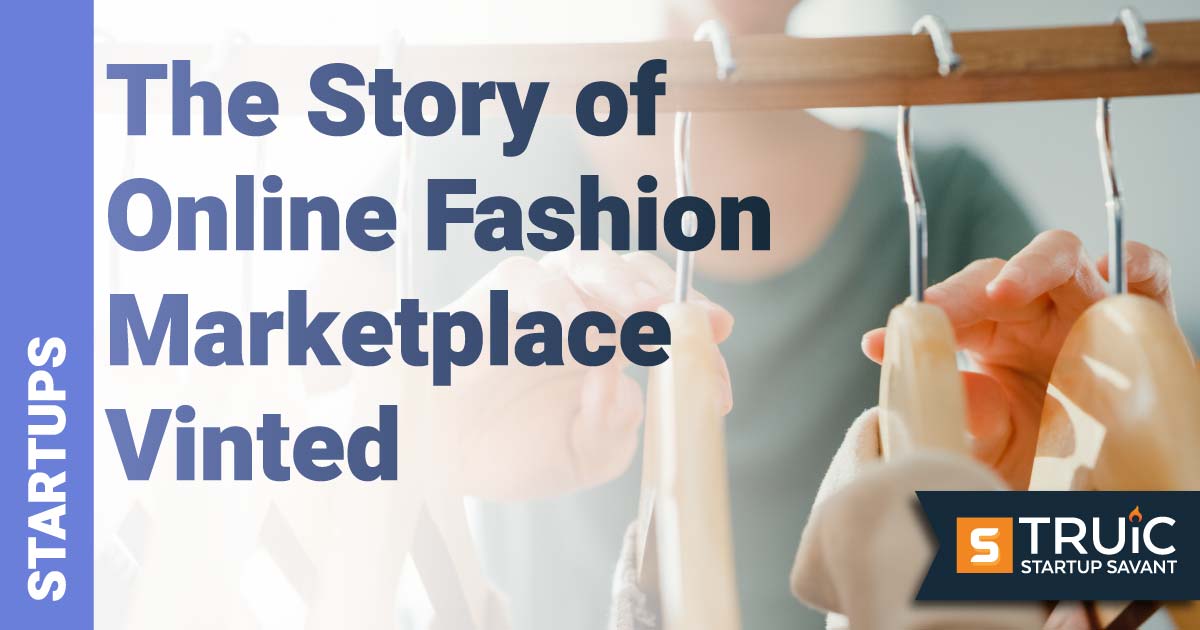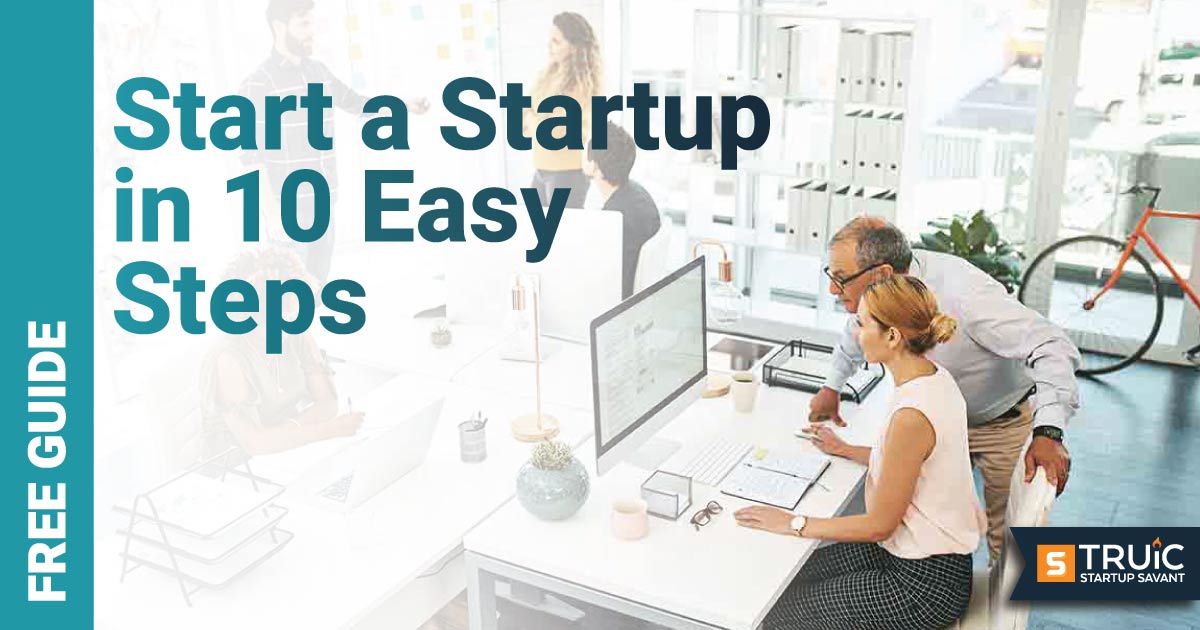How Vinted Became Europe’s Largest Online Secondhand Clothing Marketplace

Last Updated: By Madison Holt
Buying a new outfit can be a surprisingly fraught endeavor. Many new clothes cost a small fortune, and while the constant cycle of acquiring and discarding things is great for retailers, it’s not so great for the planet. But what if you could break this cycle by purchasing gently used wearables that are still stylish and functional?
Vinted, a global community and marketplace for buying and selling secondhand clothing and accessories, has made that vision a reality.
Vinted Overview and History
Vinted lets buyers find that perfect piece that they’ve been looking for in stores to no avail or that they simply can’t afford to purchase new. As for sellers looking to make some quick cash for something they no longer use, all they have to do is download the Vinted app, take photos of their item, describe it, and set a price. When it sells, they simply ship it to the lucky buyer with a prepaid shipping label.
Vinted also provides a way to swap clothing and accessories with other users without any money changing hands. And those who are keen to discuss the latest fashions or show off a recent purchase can do so through the company’s online forums, where topics range from flower crowns to leggings to floppy hats.
Vinted’s offices are based in Vilnius, Berlin, Prague, Amsterdam, and Utrecht. From there, it operates in 16 markets: the US, Canada, Spain, France, Luxembourg, Belgium, the Netherlands, Germany, Austria, the Czech Republic, Slovakia, Poland, Lithuania, the UK, Italy, and Portugal.
Milda Mitkute and Justas Janauskas co-founded Vinted in 2008 in Vilnius, Lithuania. Long story short: Mitkute was in the process of moving but didn’t know what to do with all of her extra clothes. Janauskas hit on the idea of a website to give away her clothes to friends. He built it, and the website became Vintage in its nascent form.
In the beginning, the website was only open to Lithuanian women for trading clothes. The founders then recruited someone to help with marketing and expanded to Germany. Vinted launched in the US in 2010.
Some other notable developments:
- In 2012, Vinted partnered with Lithuanian-based Lemon Labs to launch its mobile app, which has since become a key tool for selling clothing on the site. To underscore the app’s usefulness, Lemon Labs found that prior to the app becoming available, most of Vintage’s internet traffic came from desktop web browsers, and the rest came from mobile web browsers. After just one day, the mobile app increased the company’s overall traffic by as much as 30%. Today, you can download Vinted’s mobile all on iOS and Android, as well as on desktop web browsers.
- In 2015, Vinted announced a €25 million ($27.5 million) Series C funding round led by German media group Hubert Burda.
- In 2016, the company hired Dutch strategy consultant Thomas Plantenga. He is now Vinted’s CEO.
- Also in 2016, Vinted faced the prospect of bankruptcy and had to come up with a mitigation plan. This involved, among other things, closing offices in San Francisco, London, Munich, and Paris.
- Things turned around, and Vinted started raising money again. It became Lithuania's first tech unicorn in 2019 when it raised €128 million ($140.6 million) at a €1 billion valuation ($1.1 billion) in a round led by Lightspeed Venture Partners.
- In October 2020, Vinted acquired Dutch competitor United Wardrobe.
- In May 2022, the company announced that it would add two new categories to its platform, including pet accessories and entertainment items such as movies, books, and video games.
Today, Vinted employs more than 1,200 people worldwide and is Europe’s largest online customer-to-customer (C2C) platform dedicated to secondhand fashion. “Our growing community of more than 75 million members is on a mission to make secondhand your first choice,” the company says.
Angel investors are on board with this vision. “We were really on the same page in terms of wanting to grow Vinted globally – and not just into a local/national platform for classifieds, which most other investors were interested in,” said Lithuanian angel investor Mantas Mikuckas in an interview with Tech.edu.
Vinted Business Model
Vinted has raised $562.3 million in total funding. Major investors include Accel, Insight Partners, Burda Principal Investments, Sprints Capital, and Lightspeed Venture Partners.
Ecommerce News says that although Vinted generated revenues of €245 million ($269.2 million) in 2021, it wound up with losses of €118 million ($129.6 million), largely due to skyrocketing market expenses. That said, the company was valued at €3.5 billion ($3.8 billion) in 2021.
Like any online marketplace, Vinted is made up of buyers and sellers. The marketplace is open to almost any type of clothing or accessory, including shoes, bags, shirts, pants, sunglasses, etc. Items are divided into standard categories like men’s, women’s, and children’s.
You don’t have to pay a fee just to list an item on Vinted, and the platform doesn’t take a cut of sales revenue. Instead, according to FourWeekMBA, Vinted makes money through four primary revenue streams:
- Buyer Protection/Service Fee: Buyers pay a fee that covers customer support, insurance, and package tracking. This fee amounts to 5% of the purchase price plus a fixed amount of $0.70. It includes purchase protection, which will refund buyers if an item is damaged during shipping, doesn’t come at all, or differs significantly from how it was described on the site; and fraud protection, which checks transactions at random to make sure the purchases are being made by legitimate buyers.
- Bumping Listed Items: Sellers can pay a fee to bump (promote) an item. The fee ranges from $.05 to $5 and results in the item being displayed in more members’ item feeds/news feeds and search results. The item is bumped once a day or three or seven consecutive days (depending on which the seller paid for) or until it’s sold. Buyers can see how many people looked at and interacted with the item.
- Closet Spotlight: The Closet Spotlight can be used to promote items to a separate section of members’ item feeds/newsfeeds, as well as in catalog search results based on members’ preferences, catalog filters, and most-favorited items. If a seller opts for this service, which costs $6.95, Vinted will choose five items from their catalog for promotion. The seller can see how many users clicked on them or saved them as favorites.
- Third-Party Advertising: Vinted is the largest online marketplace for used clothing and accessories and, as such, presents a unique audience to advertisers.
Vinted also charges shipping fees. These fees, which are the responsibility of buyers, depend on standard factors like the type of courier service and the package weight. It is unknown whether Vinted makes money from shipping fees.
Vinted Marketing Strategies
One of Vinted’s main selling points is that it allows people to “upcycle” used clothing and accessories rather than buying them new. This both saves consumers money and reduces waste and pollution, which is good for the planet.
The company also offers a chance for people to find items they like that aren’t even available in stores. That’s because fashions come and go all the time based on the whims of manufacturers and industry influencers, which means that many things people still like to wear can suddenly become yesterday’s news – and stores don’t like to stock items deemed passé (even if they’re really not).
The Drum notes that the secondhand merchandise category is becoming more competitive than it used to be, in part because of inflation. A report by Unidays found that:
- The secondhand market is predicted to grow by 127% by 2028.
- 75% of students shopped for secondhand goods.
- 37% of students are reselling their clothes.
- 69% of people in Generation Z think that brands should reward those who shop for secondhand items through discounts provided by retailers or third parties.
Because of the increasing popularity of used goods, companies – including Vinted – have had to evolve their marketing strategies, including spending more on ads. M&C Saatchi London’s chief strategy officer Sophie Lewis told The Drum that the increased marketing spend is reflective of the fact secondhand shopping has officially reached the “tipping point where it's become mainstream.”
As such, Vinted spent £37 million ($46.1 million) on advertising in 2022. “Vinted is clearly generating revenues as such they can use mainstream big rich mediums to bring in new people and get increased penetration,” Lewis told The Drum.
Beyond advertising, the company’s marketing strategy relies on communicating two key benefits to consumers, Natacha Blanchard, Vinted’s consumer lead, told The Drum. These benefits include:
- The ability to easily sell things you no longer want or need
- The opportunity to help the planet by consuming more sustainably
Vinted also strives to show consumers how they incorporate the company’s app into their everyday lives. In addition, it wants to “normalize buying secondhand in general,” Blanchard said.
To that end, the company is focusing its marketing efforts on channels that are scalable, measurable, and efficient, including television and online video. “Consumer behavior on a mass level has shifted in favor of more circular behavior and eventually more responsible consumption habits,” Blanchard told The Drum. “We are now the leading online C2C platform dedicated to secondhand fashion in Europe and are solidifying our mission to make secondhand the first choice.”
What’s Next for Vinted
Vinted Go
Vinted says that Vinted Go, a new delivery service in the Paris region that utilizes lockers in several partner shops, has proved to be a “great success.” The lockers allow Vinted members to send and receive their products via the platform while shopping and even print package labels. About 100,000 packages were delivered via Vinted Go through the end of 2022.
Vinted recently announced that it is expanding the service to the French towns of Lille, Lyon, and Marseille. The expansion will increase the total number of operational lockers to 2,000 by the end of 2023.
Saving the Planet
Going forward, Vinted wants to solidify its mission as a company that can help save the planet. It recently released the results of its first Climate Change Impact Report, an independent analysis conducted by climate tech start-up Vaayu of the climate impact of shopping secondhand on Vinted compared to buying new.
According to the report, which was conducted from 2021 to 2022, purchasing used items instead of new ones is good for the climate:
Buying secondhand fashion on Vinted instead of new demonstrated an average emissions saving of 1.8 kgCO₂e per item. This means that the net carbon emissions avoided by the Vinted Marketplace in 2021 were 453 kilotonnes CO₂e, the equivalent emissions to flying between London and Los Angeles and back approximately 275k times.
In part because of concerns about climate change, the report also found that about 20% of buyers on Vinted would have chosen secondhand over new items even if the equivalent new item was almost the same price.
“Fashion is responsible for significant damage to the environment, so our mission is grounded in the conviction that resale is one of the solutions to tackle this harm,” Vinted CEO Thomas Plantenga said in a press release. He said the company is:
- Encouraging its members to buy secondhand instead of new to reduce emissions, and
- Helping people appreciate and realize the value of the items they already own.
“We will use learnings from this analysis to ultimately help Vinted and our members change fashion consumption habits and continue reducing the negative impact of fashion on the climate into the future,” he said.
Tell Us Your Startup Story
Are you a startup founder and want to share your entrepreneurial journey with our readers? Click below to contact us today!


